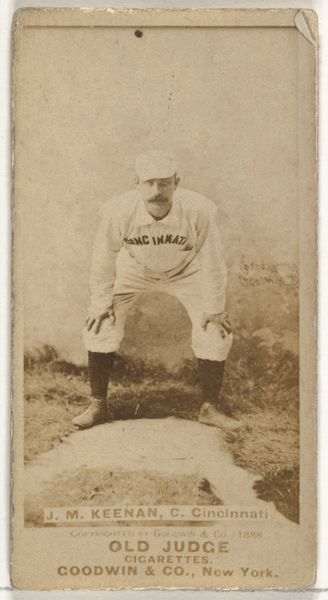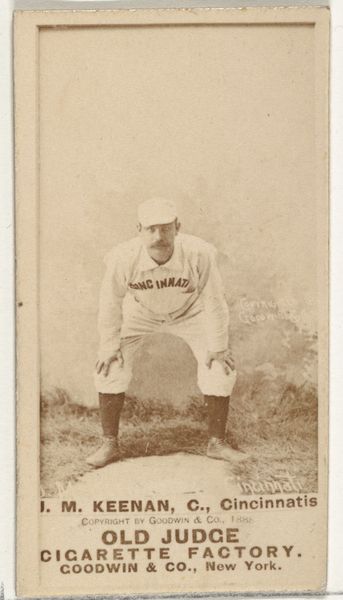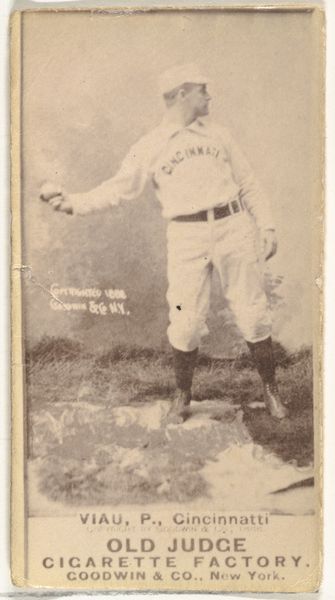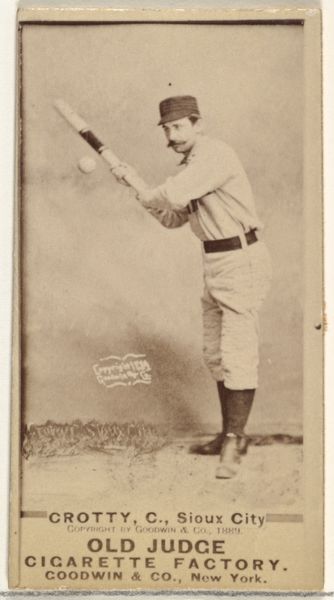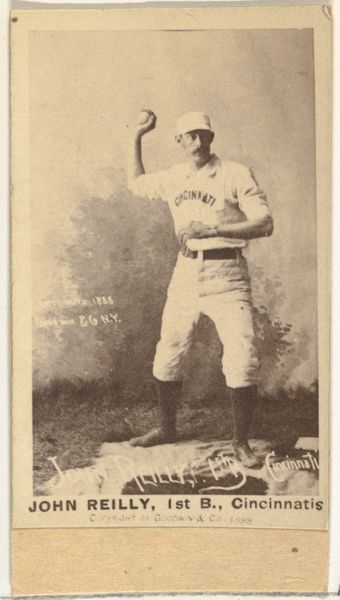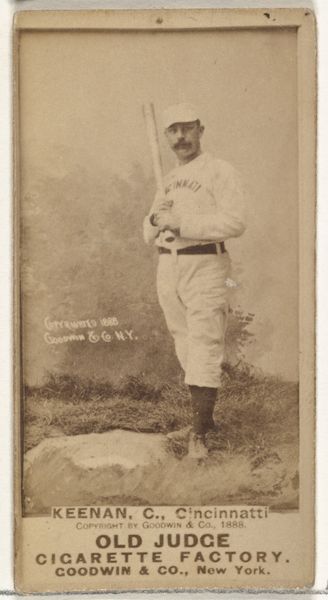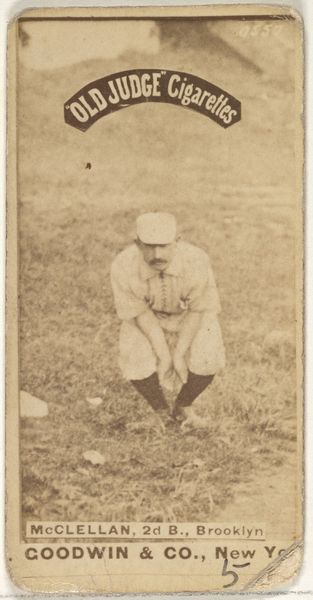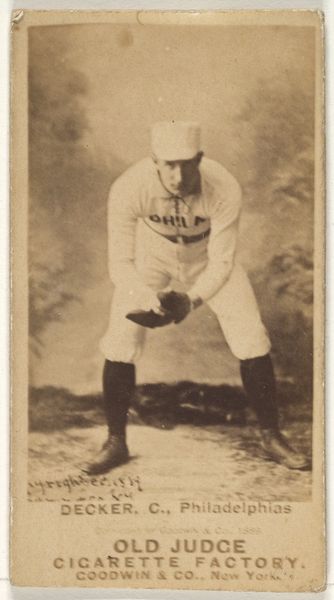
James William "Jim" Keenan, Catcher, Cincinnati, from the Old Judge series (N172) for Old Judge Cigarettes 1887
0:00
0:00
print, photography
#
portrait
# print
#
baseball
#
photography
#
men
#
athlete
Dimensions: sheet: 2 11/16 x 1 3/8 in. (6.9 x 3.5 cm)
Copyright: Public Domain
Curator: This is an image of James William "Jim" Keenan, a catcher for Cincinnati, captured in 1887 as part of the Old Judge series (N172) for Old Judge Cigarettes, a print from photography by Goodwin & Company. Editor: The sepia tone is strong. He's crouching, eyes down, like he's about to conjure the perfect pitch out of the dirt itself. Gives it a very contemplative mood. It makes me wonder what he’s thinking! Curator: These Old Judge cards represent an important intersection of commerce, celebrity, and sport in late 19th century America. Consider the way baseball's rising popularity mirrored the expansion of industrial capitalism. Keenan here becomes a commodity, his image used to sell cigarettes. It speaks to the commodification of athleticism, even in its nascent stages. Editor: Commodity might sound cold, but I also see a celebration. It's a bit like today's athlete endorsements. The way he’s poised feels incredibly human, too. It’s like he's sharing a private ritual with the viewer, inviting you into his headspace before a crucial play. Curator: Precisely. And let's consider representation. These cards were largely aimed at white, middle-class consumers, so Keenan, as a figure within this frame, reflects both the idolization and the limitations placed on athletes within a specific social hierarchy. Editor: Mmm, the photo has aged well. Do you think Keenan had any idea this image of him would endure this way? Like his ghost, enshrined at The Met, is still out there inspiring. I think about his career after seeing this... Curator: Absolutely. These images offer a unique lens through which to examine broader social narratives about labor, leisure, and identity during a transformative period in American history. What did it mean to be a celebrated athlete at this particular moment? Who was included, and more importantly, who was excluded? Editor: Definitely. There is a palpable tension between what's captured and what remains unspoken. It adds depth to this otherwise simple portrait. Curator: I agree; those tensions shape our contemporary understanding and appreciation of works like this. Editor: Cheers to looking back, not just at what we see, but what simmers beneath the surface, too. It's the kind of dialogue art begs from us, don’t you think?
Comments
No comments
Be the first to comment and join the conversation on the ultimate creative platform.
